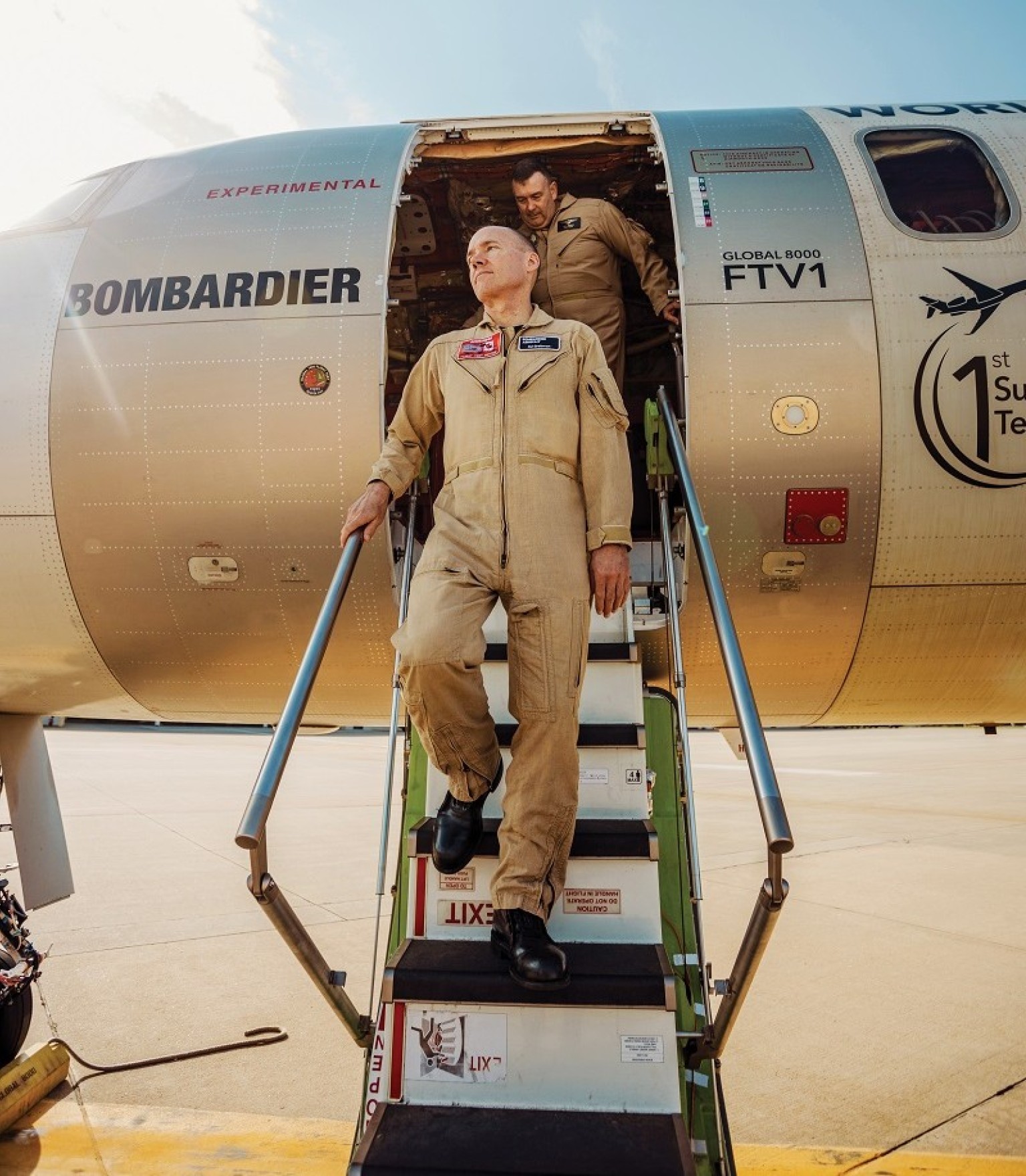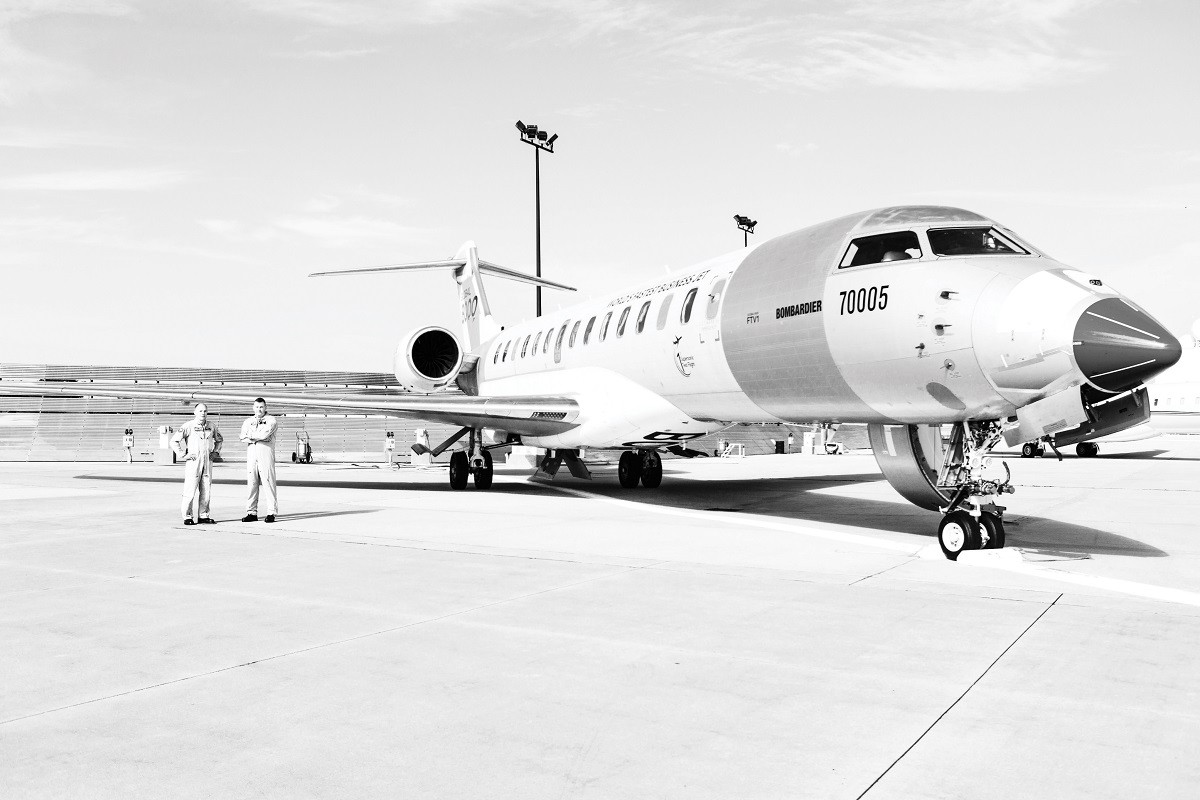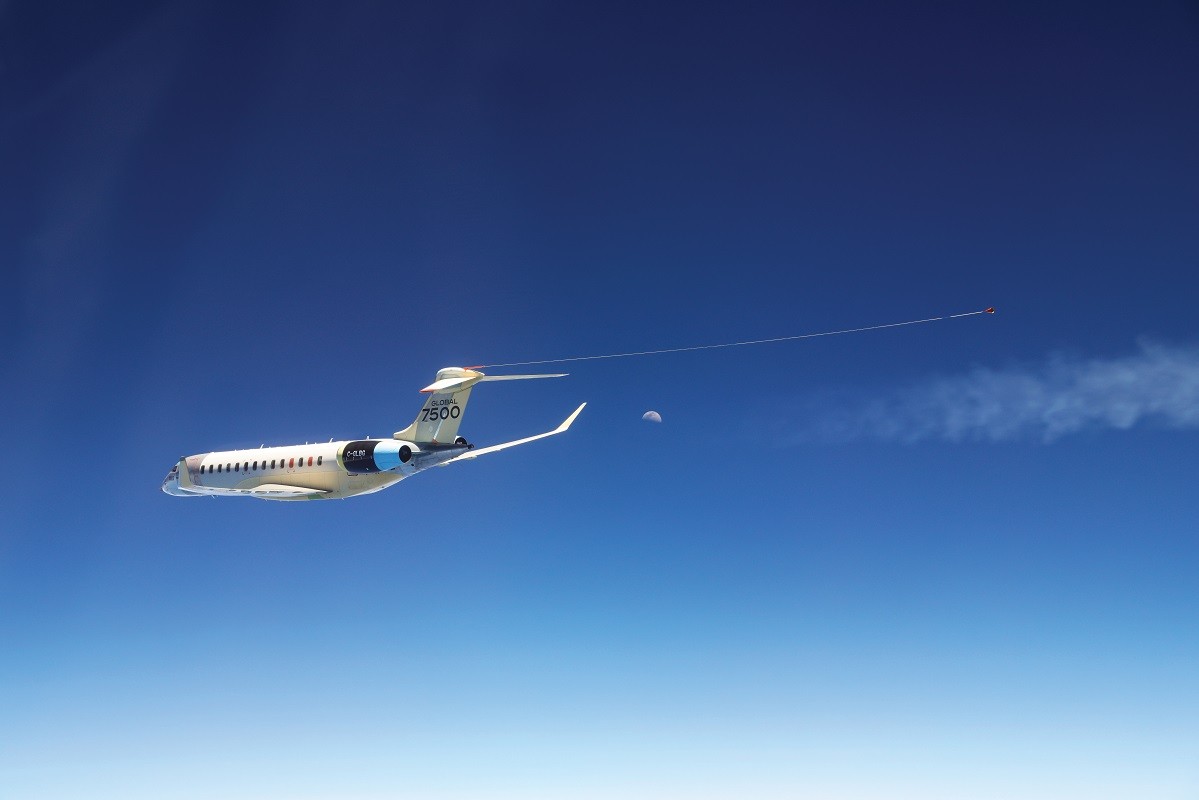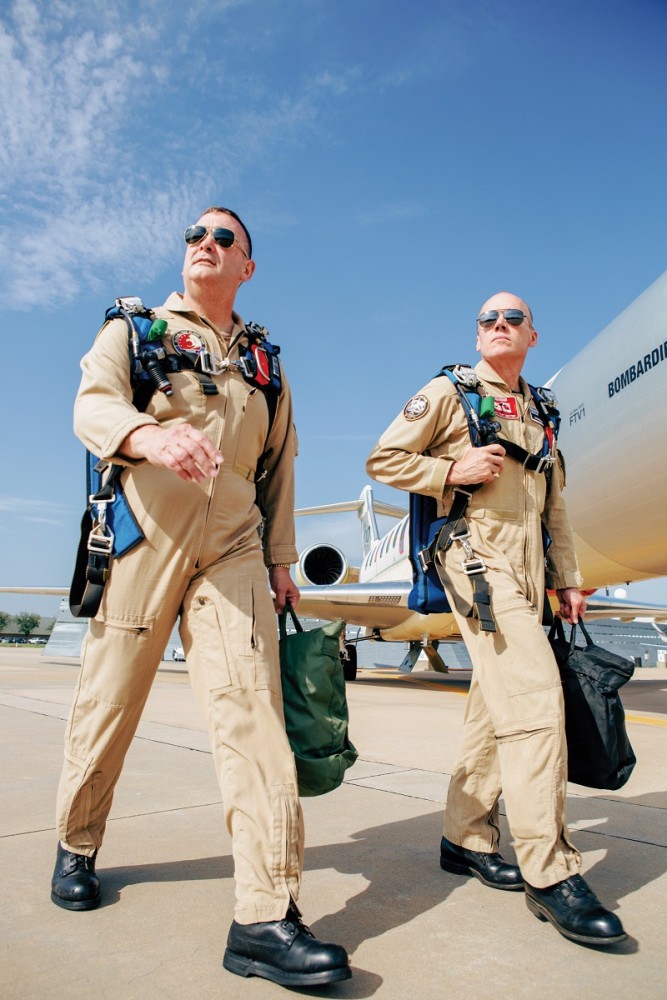The pre-flight briefing lasted about an hour, and once it was completed, Grabman, Karnes and Povall stepped aboard the aircraft. Given the high altitude for the test, they all needed to don flight suits, helmets and oxygen masks per Bombardier flight test safety protocol. The aircraft took off at 7 a.m. and climbed to 40,000 feet, where it rendezvoused with a NASA F/A-18 chase plane that happened to be familiar to copilot Jeff Karnes. “I looked out the window at the chase plane and recognized that it was the exact same F/A-18B Hornet that I flew when I was with the Strike Aircraft Test Squadron (now VX-23) at Patuxent River Naval Air Station in Maryland. NASA hadn’t even repainted it, so it still had the same VX-23 Salty Dogs paint job from my days flying it as a Marine test pilot.”
Flying in formation, the two aircraft climbed to an altitude of 50,000 feet, where the F/A-18 pilot had to engage its afterburner just to keep up with the climbing Global 8000 test aircraft. At the chosen altitude, the aircraft began its acceleration descent to the target Mach to commence the first of several tests. These started with roll, yaw and pitch controllability evaluations, followed by 1.5 to 2.0 G pull-ups with spoilers extended, each time getting closer and closer to the speed of sound.
After a final ascent to 50,000 feet, the chase plane in position and with the team in the telemetry room back at Santa Maria confirming monitoring equipment was functioning correctly, the only thing left to do was make history. All those months of planning, preparation and training came down to this moment. Jeff gently nosed the aircraft down slightly, pushed the throttles forward and observed the Mach numbers increasing, Mach 0.95, Mach 0.96, Mach 0.97, Mach 0.98, Mach 0.99. Then came Jim Less, the NASA chase plane pilot, over the headset, “There’s the Mach, I can feel it. We definitely went Mach 1 there.” On the primary flight display the Mach indicator rolled above 1.0, easily achieving supersonic flight as predicted and with no control issues whatsoever.







